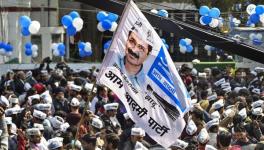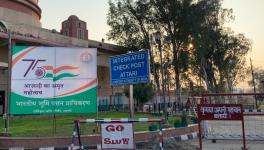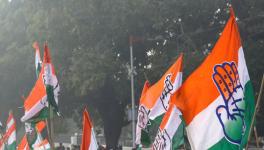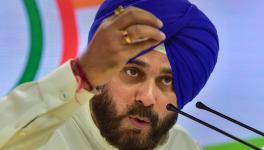Why Punjab is Facing an Unprecedented Power Crisis
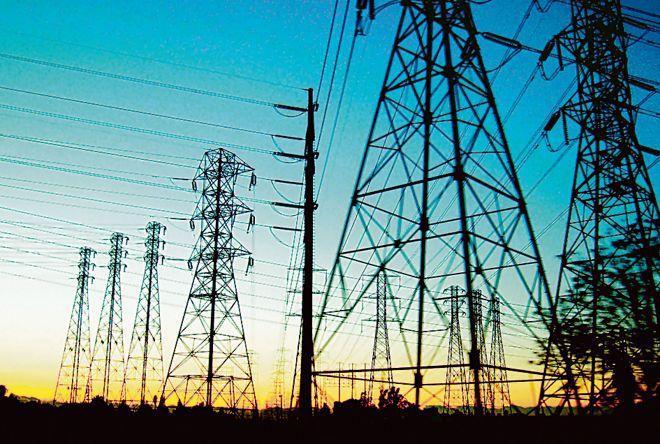
Representational Image. Image Courtesy: Tribune India
There are nearly seven months left before the next Assembly election in Punjab. The three main parties of the state, the ruling Congress, the Shiromani Akali Dal and the Aam Aadmi Party, have already started making promises to voters. One of these is to provide 200 to 300 units of domestic electricity free of cost and ensure 24-hour electricity supply to homes and farms. These promises are very far from the ground realities of Punjab.
At present, the state is facing a deep power crisis. North India’s largest thermal power plant, set up by Vedanta under a private partnership, has a capacity of 1,980 MW from three units at Banawala village near Mansa city. All three shut down one by one over the last week due to “technical faults”. There was talk of reviving one of the plants on 11 July, but it did not happen. A unit of the Guru Gobind Singh Super Thermal Plant in district Ropar has also developed a snag. As a result, extended power cuts have become the norm in Punjab, angering farmers and all other sections.
The farmers and the general public are out on the streets protesting against these cuts. People are criticising the power purchase agreements drawn up with private companies during the Akali Dal rule. Even the Capt Amarinder Singh government is being criticised for not being able to meet the electricity demand.
The power crisis has seriously injured agriculture and the industrial sector. A month has passed since paddy transplantation began, and the summer temperature is soaring, but the government could not provide the electricity supply earmarked for farms or domestic consumers. The Chief Minister claims that agricultural operations are getting eight hours of power supply. But reality belies this claim. Data from the state-run electricity company, Punjab State Power Corporation (PPSCL or Powercom), has revealed that on 8 July, the agriculture sector in Punjab got 7.12 hours of power supply, while the border areas got 7.30 hours of electricity. These facts presented by the PPSCL do not just contradict the claims of the government. In fact, the power supply was less than even what Powercom has claimed.
Now, the state government claims there are no longer any power cuts. Yet, according to official data from Powercom, in the last few days, there were 4.52 hours of cuts in urban-pattern rural electricity supply, 6.16 hours of cuts in rural supply, 2.51 hours of cuts in urban/industrial areas, and 5 hours of power cuts in the Kandi area. Last year, there were no power cuts during this season.
Punjab has about 14.5 lakh farming tubewell connections and 6,000 farming feeders. Therefore, farmers’ organisations are raising questions about the government’s role in creating this crisis and its inability to solve it. Farmer leader Rajinder Singh says that given the impact of agricultural laws on farmers, the Punjab government should have ensured ten instead of eight hours of supply without any hindrances. Instead, the government has been trying to fool the farmers by presenting the public with wrong facts. “The Punjab government should send its teams to the fields to find out what the truth is,” says Bharatiya Kisan Union (Ugrahan) leader, Shingara Singh Mann.
The power cuts have forced Punjab’s large industries to shut operations. Punjab has an electricity demand of around 11,690 MW, of which 7,700 MW is purchased from outside the state. Powercom, the state-run supplier, is trying to create the illusion that this electricity has been purchased at an astronomical price of Rs.12.49 per unit. However, experts say this is a half-truth as the rate the government is talking about is for the peak (evening) demand, while the average rate of the day (RTC) is far lower, Rs.5.09 per unit.
Farmer leaders also say that if the Power Minister had planned for the necessary demand in advance, this crisis would not have occurred. According to the data, this time, Punjab is getting 125 MW less electricity from the Bhakra Dam, while the private thermal companies of Gujarat have cut 200 MW of PPSCL supplies. According to one estimate, the power demand of Punjab could reach 14,500 MW in the summer months.
Punjab’s power production is about 5,700 MW. The state’s hydroelectric projects generate 1,015 MW of electricity. But this time, due to the lack of water in the dams, only 894 MW is available. Punjab also gets 1,558 MW from government thermal plants and 1,339 MW from the Rajpura thermal plant. About 1,228 MW of electricity is generated from the 1,980 MW Banawala thermal plant. The remaining electricity has to be bought from outside.
In 2018, based on the recommendation of a Cabinet Sub-Committee consisting of state Finance Minister Manpreet Singh Badal and three other ministers, the production of 880 MW units from the Bathinda and Ropar thermal power plants were halted, and no alternative was thought of. Overall, the demand for about 1,700 MW of electricity is not being met, and the result is power cuts.
Further, the demand for electricity increases by about 1,000 MW every year in Punjab. Powercom, the Punjab State Transmission Corporation (Transco) and the government of Punjab have to jointly manage power supply. In 2018-19, the electricity demand had gone up to 13,633 MW. However, in 2019-20 and 2020-21, electricity demand did not grow much as industries and other commercial establishments were closed during the Covid-19 lockdown.
The government did not prepare for a surge this year either, so the demand of 1,300 MW remains unfulfilled. Also, the power agreements of the previous Akali-BJP government with private companies do not have the condition that thermal power plants must remain operational during the summer or be liable to pay damages. Senior journalist Hamir Singh, who has reported extensively on the power situation in Punjab, says, “The previous Akali-BJP government and the current Congress government are responsible for this crisis. As an immediate solution, the government should immediately appoint a regular chairman for Transco and Powercom.” He says the government should also consult technical experts when it makes power-related decisions. The agreements with private thermal companies have no penalty provision if they do not provide electricity as per the requirements. “The Amarinder Singh government came to power promising it would cancel all agreements with private companies. Money is needed to buy electricity when Punjab is facing a financial crisis,” says Hamir Singh.
Whatever happens, the state government seriously needs to frame a concrete policy to find a permanent solution to this crisis.
The author is a freelance journalist. The views are personal.
Get the latest reports & analysis with people's perspective on Protests, movements & deep analytical videos, discussions of the current affairs in your Telegram app. Subscribe to NewsClick's Telegram channel & get Real-Time updates on stories, as they get published on our website.









